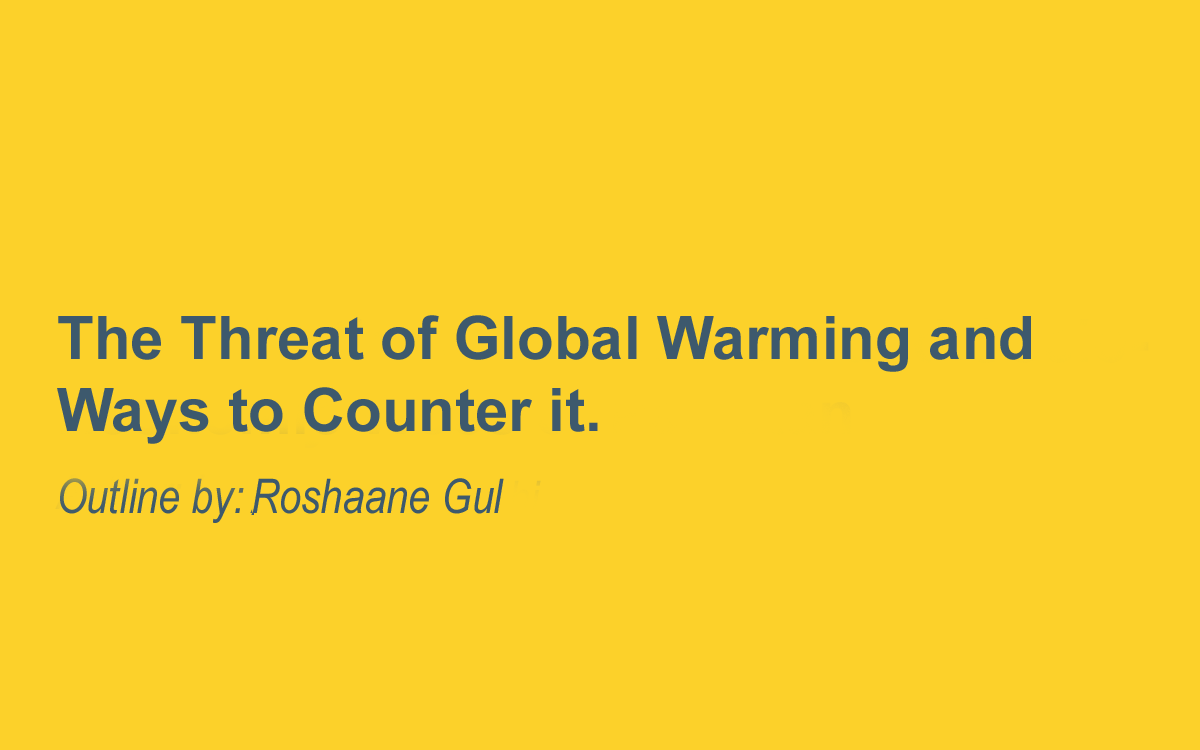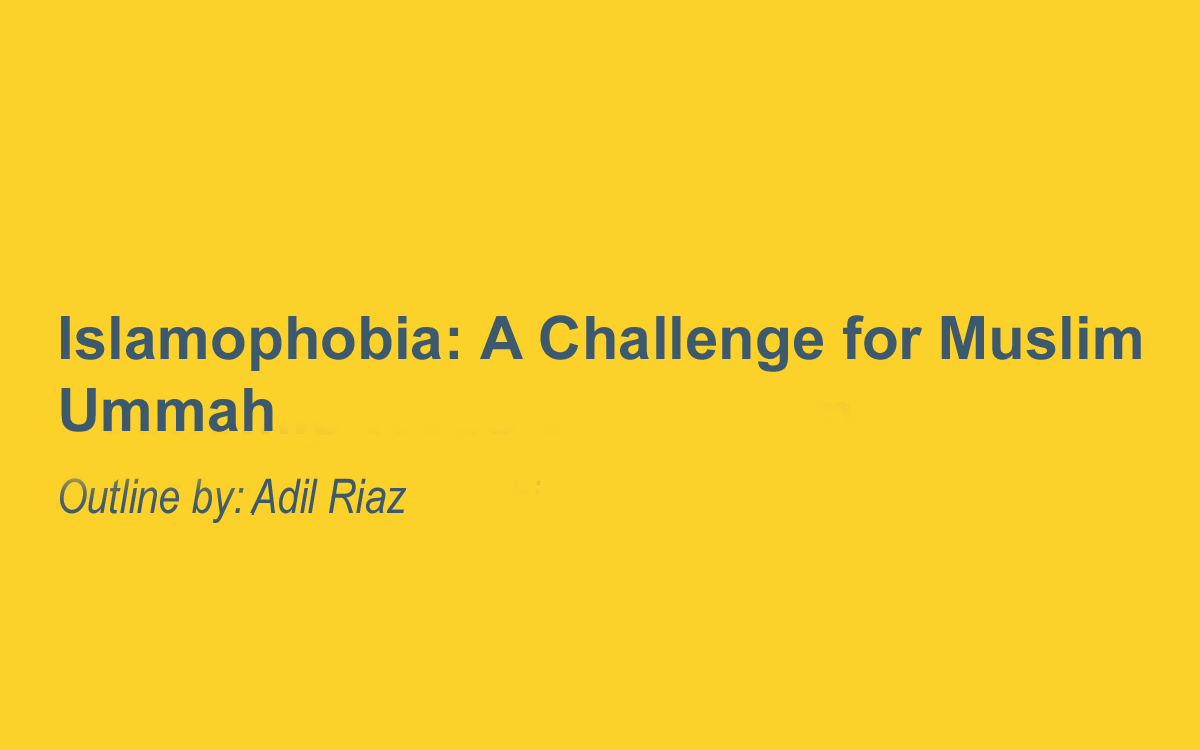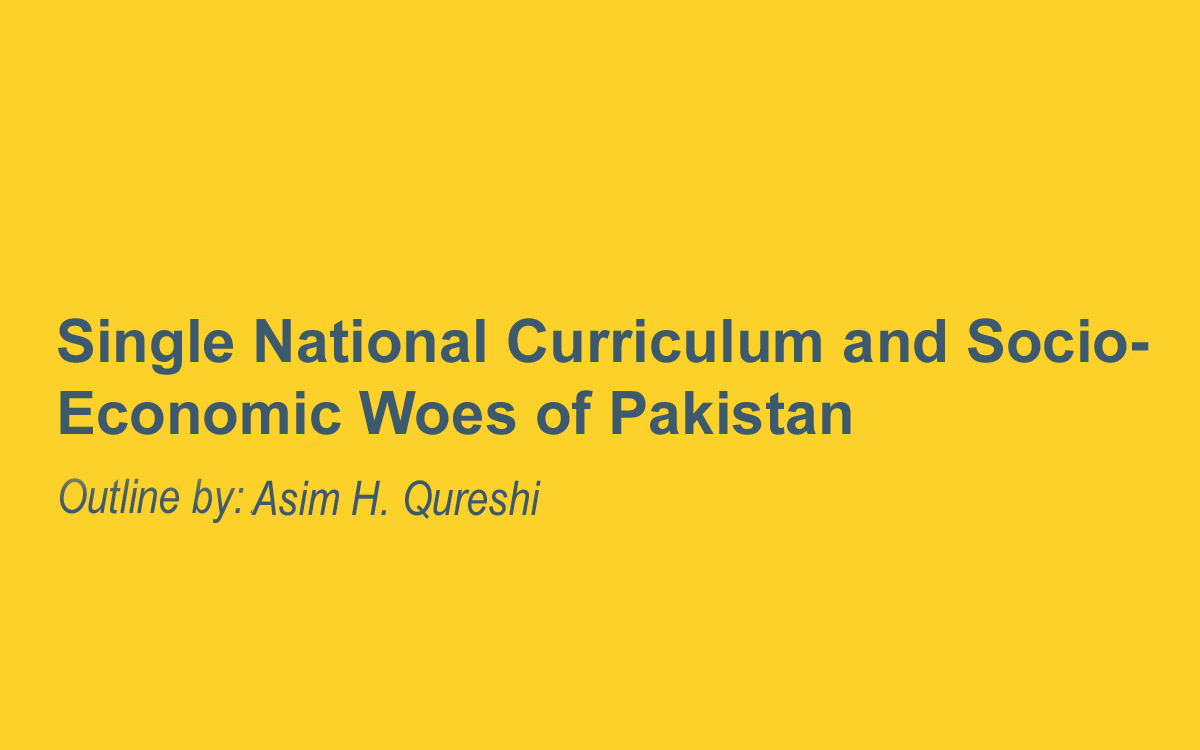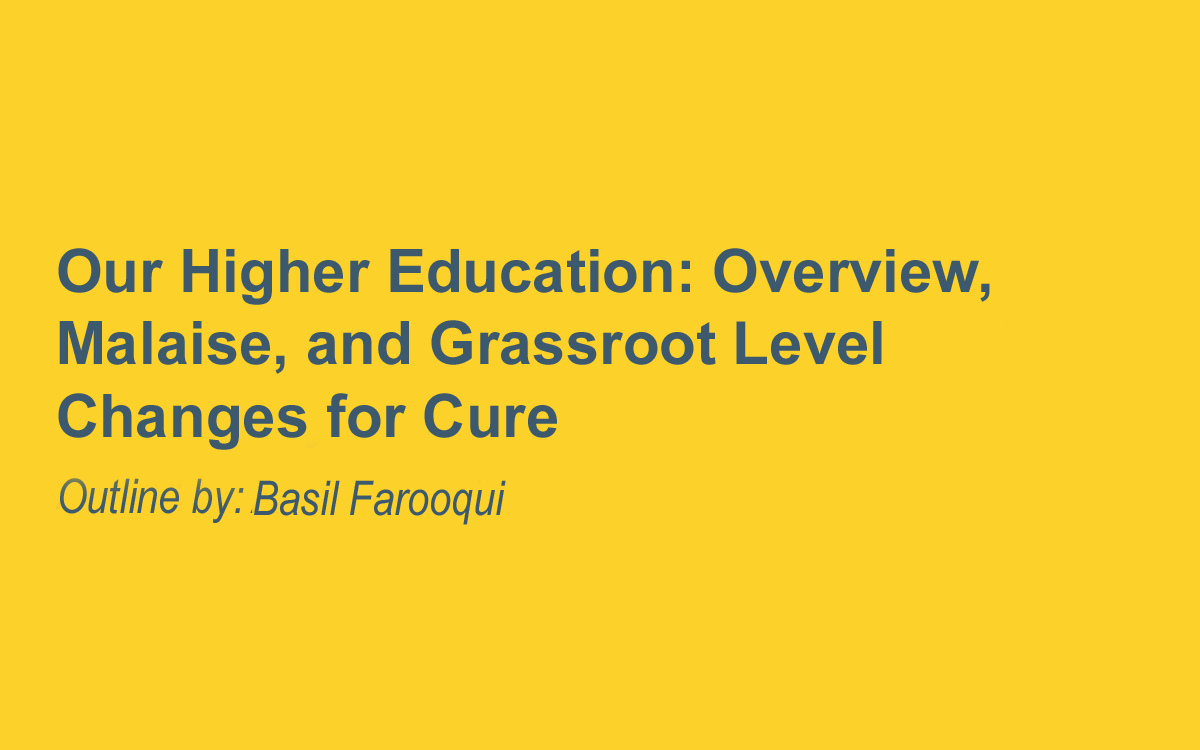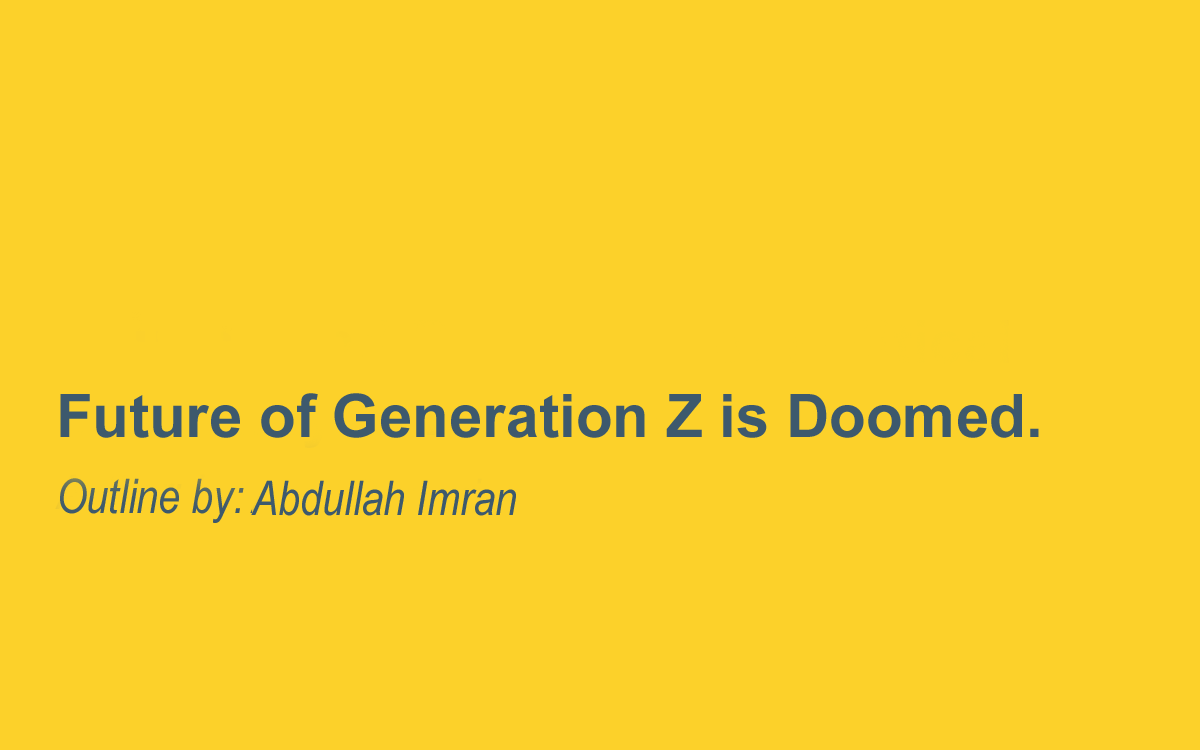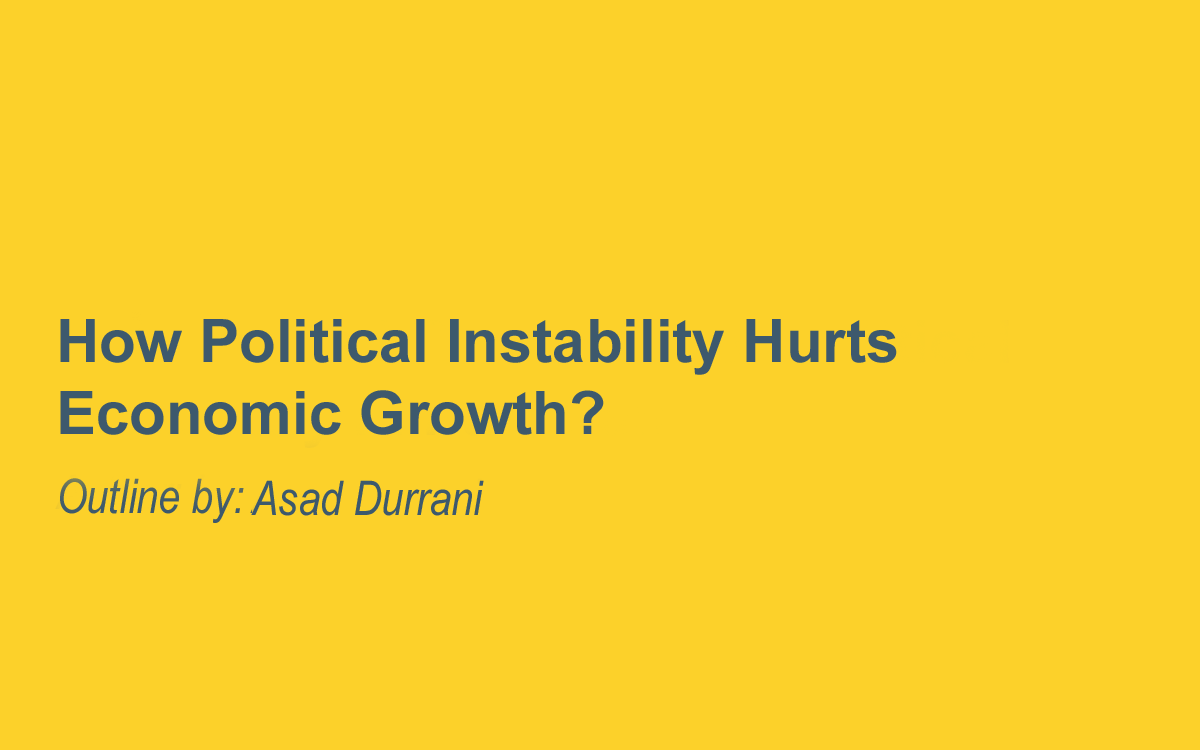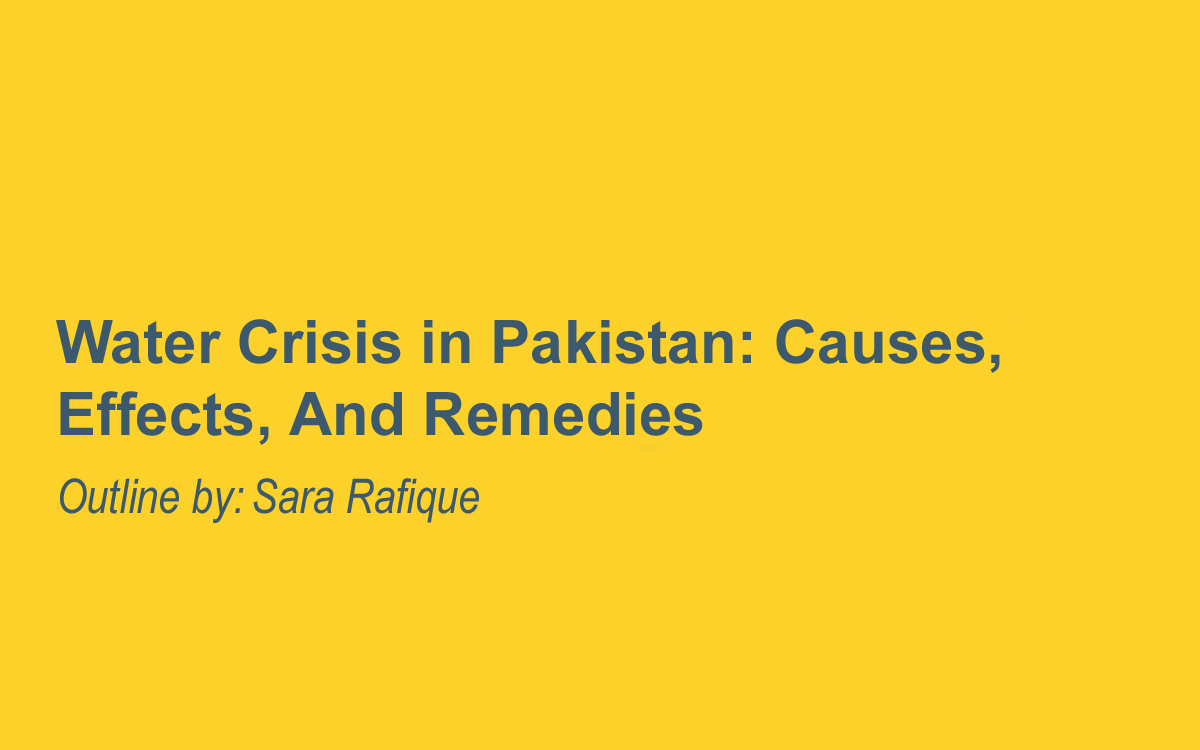The Threat of Global Warming and Ways to Counter it. Author: Roshaane GulOutline 1. IntroductionGlobal warming is the largest and most dangerous thread to human being and biodiversity which demands urgent action through sustainable means, alternative resource uses and combined initiative at individual – national and international levels. 2. Understanding global warming and greenhouse gases 3. Status of global warming in 20234. Causes of Global Warming: Natural and anthropogenic5. Looming Threats of Global warming a. Rise in earth average temperatureb. Melting glaciers and sea level risec. More intense and prolonged natural disastersd. Disturbing the physical and mental health of human beingse. Threat to biodiversityf. Climate migrationg. Hunger and food insecurity 6. Disproportionate Impact of global warming on a. Women and girlsb. Development Nations/Poor countries 7. Counter measures taken by the world: Earth Summit, UNFCC, IPCC, COP and Paris Agreementa. Challenges in these measures 8. Recommended measures to counter the threat of global warminga. Use of renewable energy resourceb. Initiative to reduce production of greenhouse gasesc. Initiate reforestation campaignd. Control population explosione. Invest in energy efficient appliancesf. Using artificial intelligence toolsg. Promoting climate justiceh. Key role played by big economies like the US and China 9. Conclusion Read More Outlines
Eagles Fly Against the Wind.
Eagles Fly Against the Wind.
Islamophobia: A Challenge for Muslim Ummah
Islamophobia: A Challenge for Muslim Ummah Author: Adil Riaz Gondal – AC PMS|CSS-2022Outline 1. Introduction a) Hypocrisy of West regarding head crimes b) Islamophobia as a challenge 2. Islamophobia challenge for Muslim Ummaha) Portrayal of a oppressive and brutal image of Islam i. Islam as a religion of hate and terrorii. Direct linkage of islamophobia and image of Islam b) Misinterpreted Islamic notions i. Misinterpretation of the concept of Jihadii. Rising islamophobia and increase in misinterpretation c) Misconceived narrative endorsed by West i. Portrayal of Islam as the religion favoring and endorsing terrorism d) Hate crimes against Muslims i. New Zealand mosque attackii. Attack on Muslims in Hamilton Canada e) Suppression of Muslim minorities i. Human rights violations in Jammu Kashmirii. Abaya case f) Islamophobic trends affecting foreign relations i. Foreign relations of almost all Muslim countries are affected by islamophobia g) Alienating Muslim world from the Ambit of international politics i. Topsy-turvy cycle of FATFii. Labeling of Muslim countries as terrorist h) Presumed ground to intervene and kill millions of Muslims i. Intervention of Afghanistan after 9/11ii. Civilian casualties in Iraq intervention i) Rising Trends of islamophobia: – exposing disunity in Muslim ummah i. Internal dispute among Muslim countriesii. Absence of united voice against islamophobia j) Reflection of Islamophobia in daily routine as well as public policy invest i. From bulling Muslims to restricting their fundamental freedoms 3. Counter measures to combat islamophobia a) Revamping misinterpreted Islamic notions i. Misconceived and misinterpreted image of Islam to be rectified b) Combating islamophobia demand strong and united voice of Muslim Ummah i. Strong voice of Muslim leadersii. Effective role of OIC and United Nations 4. Conclusion Read More Outlines
Single National Curriculum and Socio-Economic Woes of Pakistan
Single National Curriculum and Socio-Economic Woes of Pakistan Author: Asim H. Qureshi – Information GroupOutline 1. Introduction The previous Pakistani regime vowed to promulgate a single curriculum nationwide. The policy faced various social, financial and other cross-sectoral hurdles. Single national curriculum needed room for Improvement and reforms. However, its effective implementation could result in amelioration of the socio-economic woes of Pakistan. 2. Single National Curriculum (SNC): Ending the educational apartheida. Eradicating the trilateral discriminatory education system prevalent in Pakistan 3. Socio-Economic woes of Pakistan: A hurdle to effective implementation of SNCa. Interprovincial, cultural references as impediment to SNCb. The 18th Constitutional amendment and center-Province riftsc. Shadow of Militant extremism, Sectarianism and terrorism on SNCd. Political Fluidity and lack of zealous leadership: an impediment to educatione. Poverty resisting effective promulgation of SNCf. Close fisted budgetary allocation and lack human and material resources for education 4. SNC as a panacea to prevalent socio-economic of Pakistana. SNC: A tool to end social intolerance and internecine rivalries.b. SNC will result in decreased unequal opportunities and competencesc. Eradication of militancy, extremism, sectarianism and terrorism: Enlightened moderationd. Provision of human rights and women empowerment: Article 25(A) of Constitution ofPakistan 5. Room for reforms in SNCa. Acknowledgement of Provincial considerations: Cultural and linguistic issuesb. Protection of minority rights: Article 22 of constitution of Pakistanc. SNC should carve out a broad-based educational agenda.d. Emphasize on research and development rather rote learning 6. Conclusion Read More Outlines
Our Higher Education: Overview, Malaise, and Grassroot Level Changes for Cure
Our Higher Education: Overview, Malaise, and Grassroot Level Changes for Cure Author: Basil Farooqui – PSPOutline 1. Introduction:The higher education system in Pakistan is infected with various parasites pertaining to diverse reasons of governance, economies and technology. However, the apt grassroots level changes can cure the higher education system of its ills. 2. The faulty system of higher education in Pakistana. The pool of problems surrounding the education in Pakistan 3. A systematic overview of education systema. The primary system: The only bipartisan stageb. Matriculation system and variety of education boardsc. The Cambridge system for the elited. Stratification of the middle-class: college of diplomae. Post-graduate and graduate system of Pakistan 4. Malaise in higher education systema. Prevalence of status-quo in the systemb. Outdated educational resourcesc. Inadequate teachers trainingsd. Reluctance to modern subjectse. Lack of research-based study 5. Grass Root level change recommendationsa. Reforming the polices of educationb. Introduction of tech-based learning of early stagesc. Problem oriented learning mechanismsd. Upgradation of course curriculum: grassroots level overhaule. Introduction to research in higher levelsf. Merit based selection of teachersg. Exchange programs and seminars 6. Conclusion Read More Outlines
Future of Generation Z is Doomed.
Future of Generation Z is Doomed. Author: Abdullah ImranOutline 1. IntroductionGeneration-Z is considered to be the leader of future and the back-bone of modern economy;however, their doomed socio-political state forecasts a stormy future ahead of them. 2. Understanding the term generation-Z3. Decaying social lifea. Schisms in plutonic relationsb. Transactional relations with friendsc. Confused/ commitment-phobic lore-life i. Dating cultureii. Casual relations and increased divorcesiii. Non- existent nucleus family concept 4. Shifting cultural valuesa. Birth of wore-cultureb. Declining moral and ethical bondsc. Rejection of local cultures, values and influence of westernizationd. Social media influencers: new age gurus and celebritiese. Connection with religion 5. Work ethics and relation with moneya. Strive for easy-moneyb. Hustle – culture (pseudo- entrepreneurial rise)c. Unstable careers and influence of gig- economyd. Decline in saving and unjust/ peer influenced spending 6. Influence and role of politics a. Polarized opinions (influenced by popular leaders)b. Lack rationality 7. Crumbing physical and mental healtha. Sedentary life- style (obesity, junk-food, lack of physical activity)b. Drugs and Addictionc. Mental health issues (depression, anxiety and PTSD)d. Body dysmorphia: leading to use of steroids or undergoing cosmetic surgeries 8. Protecting the future a. Joint efforts of parents, teachers and societyb. Awareness campaign by governments i. Addressing health concernsii. Positive attitudes in personal and professional lifeiii. Balanced approaches 9. Conclusion Read More Outlines
National Security Policy: A New Slogan with An Old Ideology
National Security Policy: A New Slogan with An Old Ideology Author: Wardah Irum – GB PMSOutline 1. Introduction2. Conceptualizing National Security3. National security policy – a new slogan with a new ideologya. For the first time national security policy has been created in collaboration with academia and civil society.b. Economic security has occupied a central position which traditionally has not been thepart of national security policy.c. National security policy also ensures internal security of Pakistan by eradicating socialevils.d. Renewed attention is given to good governance so that the goals of national security arematerialized.e. National Commission through the prism of ‘unity in diversity’ has been given duerecognition in national security policy.f. National security policy aims to eradicate disparities between various regions ofPakistan.g. Human security has been become part of national security policy.h. Gender security has found a place in national security policy in an unprecedented way.i. National security policy has also prioritized educational progress and security.j. Technology and innovation has been given to importance in the national security policy.k. Environmental security has also acquired a primary position in national security policy.l. National security policy proposes an integrated and diversified foreign policy based on geo- economics.m. Pakistan’s role as a champion of global cause has also been reinforced by nationalsecurity policy.n. National security policy has also renewed traditional security by aligning it with newemerging threats of the 5th generation warfare. 4. Conclusion Read More Outlines
How Political Instability Hurts Economic Growth?
How Political Instability Hurts Economic Growth?
Hazards of Urbanization and the Way Forward
Hazards of Urbanization and the Way Forward Author: Sara Rafique – CSS 2022 Outline 1. IntroductionUrbanization brings with it a myriad of hazards; however, fortunately, there are ways too thatcan help counter these hazards. 2. Factors that led to urbanizationa. Push factors- factors that push people towards urban areas – Lack of basic facilities– Poverty and unemployment b. Pull factors- benefits that urban areas offer – Better employment opportunities– Better social services like education, and health 3. Hazards of urbanizationa. Urbanization magnifies the risk of environmental hazards: – Environmental degradation– In 2018, only 3% cities met the World Health organization’s air qualityguidelines. b. Energy demand rising as more people migrate towards urban areas: – The United Nations (UN) estimates that by 2025, more than half the populationof Pakistan will be living in urban areas.– In 2014, cities accounted for 70% of worldwide energy consumption largelypowered by fossil fuels. c. More traffic and congestion: – More than 10,000 road accidents a year with almost 50% being fatal.– In Bangkok, average downtown weekday traffic speed is 10 km / HR. d. Increase in number of people without basic water and sanitation: – In 2015, there were 667 million urban residents worldwide without basicprovision of sanitation.– Approximately 34 million people in Pakistan live in informal urban settlementswhere water is scarce. e. The number of urban-poor is on the rise: – Limited access to land, high cost of living– In 2018, 40% of Pakistan’s residents were living in slums. f. Massive surge in urban crimes: – Findings of criminologists– Pressures of urban living and social deprivation 4. The way forward:a. Combating poverty by promotion of economic development and job creation in rural areas b. Hiring professional town planners for building sustainable cities – Can be taken from Helsinki – An environmental-friendly city of Finland. c. Better provision of healthcare and educational facilities in rural areas. d. Invest in Renewable Energy power generation – Supply urban neighborhoods outside the grid e. Invest in public transport and develop pedestrian zones f. Dire need of educating the masses about population control – Pakistan is the fifth most populous country in the world. g. Governments should make sure that urban planning includes plantation of trees forenvironmental purposes. 5. Conclusion Read More Outlines
Water Crisis in Pakistan: Causes, Effects, And Remedies
Water Crisis in Pakistan: Causes, Effects, And Remedies Author: Sara Rafique – CSS 2022Outline 1. IntroductionPakistan is facing water crisis caused by a myriad of reasons; however, there is a strong hope tosolve this crisis if remedies are acted upon. 2. Current scenario of water crisis in Pakistan a. Pakistan ranks 14 among 17 extremely high water risk countries in the world accordingto world resources Instituteb. Pakistan has crossed the water scarcity line. 3. Reasons behind the severe water crisis in Pakistan: a. Wastage of Limited water resources i. Pakistan receives around 145 million acre feet (MAF) of water every year fromrainfall and glacial melt, however; only 14 (MAF) is saved while rest goes to waste.ii. Inefficient irrigation system causes 60% water loss. b. Climate change contributing towards water scarcity i. Long spell of drought and a number of floods – A direct result of climate change c. Mismanagement of water resources i. Canal water immensely underpriced, recovering only one-fifth of the annualoperating and maintenance costsii. “We do not have a water crisis; we have a failure of governance with regard towater crisis” Dr. Ishrat Hussain d. Lack of dams i. While the Global average of water saving capacity stands at 40%; Pakistan savesabysmally low 9%. e. Ineffective policies and lack of implementation i. The national water policy 2018 completely misses out on setting any qualitativeor quantitative targets. f. Exponential population growth and urbanization raising the demand i. Urban population expected to reach 50% by 2050-World Bankii. Pakistan’s population growth rate stands at 21% directly contributing to rise indemand. g. Depending on a Rival statei. 78% of water comes from India. 4. Deleterious effects of the water crisisa. Citizens facing water scarcity i. Over 80% of the total population faces extreme water scarcity for at least onemonth of the year. b. Rising conflict between provinces- a threat to National Cohesion i. Lack of trust on equitable water distribution c. Impoverished of Health and sanitation due to know provision of clean wateri. Only 36% of the population has access to clean drinking water.ii. 60% of the population in Pakistan is suffering from a disease associated with in aliquid provision of drinking water and improved sanitation- government ofPakistan.d. Heavy economic costs i. According to the World Bank, economic cost to Pakistan of poor water andsanitation, floods and droughts estimated to be 40% of GDP or $12 million peryear. 5. Remedies to solve the water crisis in Pakistan a. Water resource management through Technologyi. Use of drip irrigation and sprinkler system b. Use of water metering to recover costs c. Wastewater management i. Case of Israel and Singaporeii. Pakistan is wasting its water resources due to in efficient consumption patternsand negligible recycling.” Dr. Tariq Banuri d. Counter population growth and build sustainable cities to urban planning.e. Shift to low water consuming crops i. Four major crops that only generate 5% of the GDP use 80% of water resources. f. Dire need of political will and effective implementation of policiesi. South Asian expert Michael Kugelman’s few points on current water crisis ofPakistan. 6. Conclusion Read More Outlines


